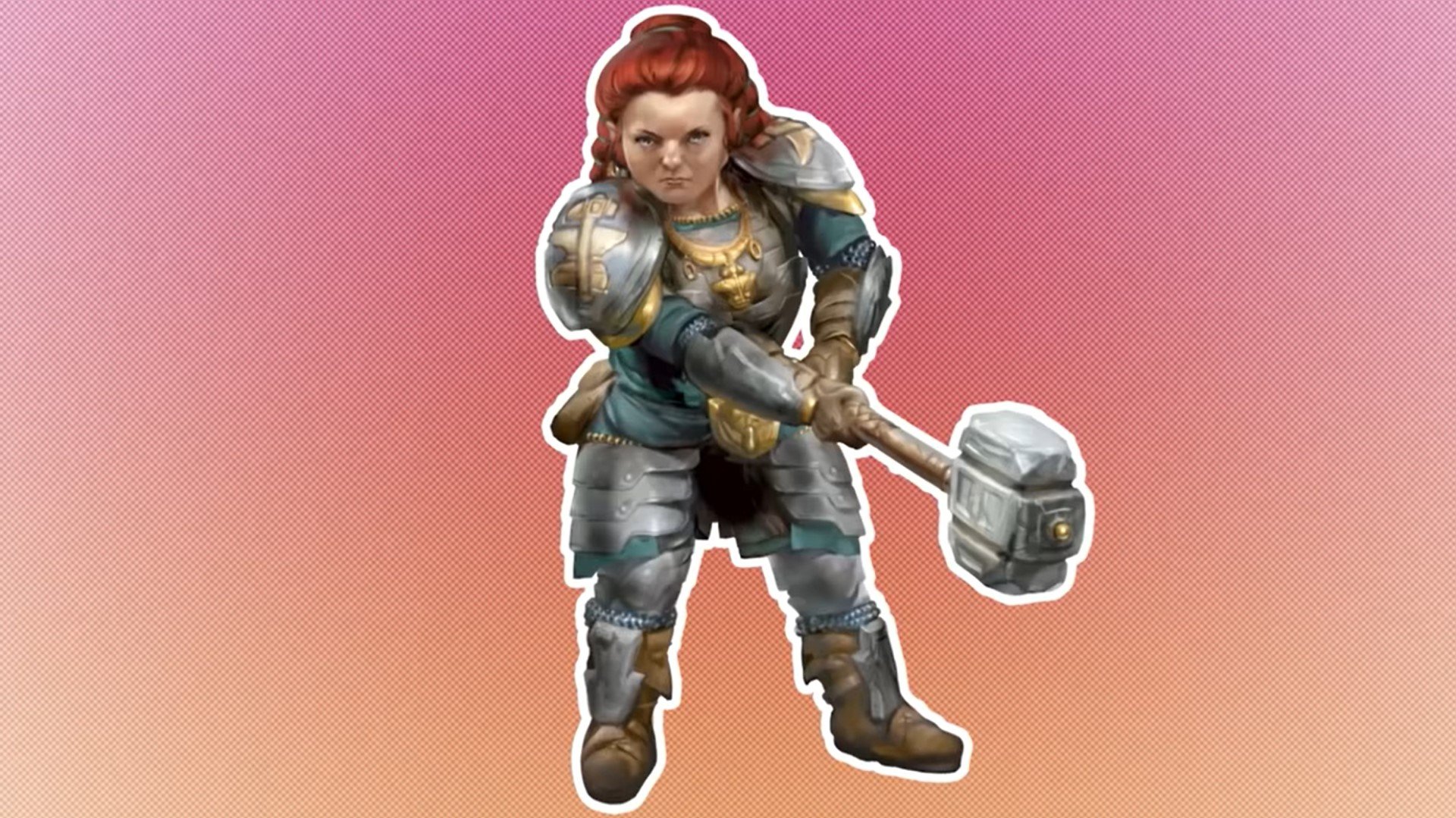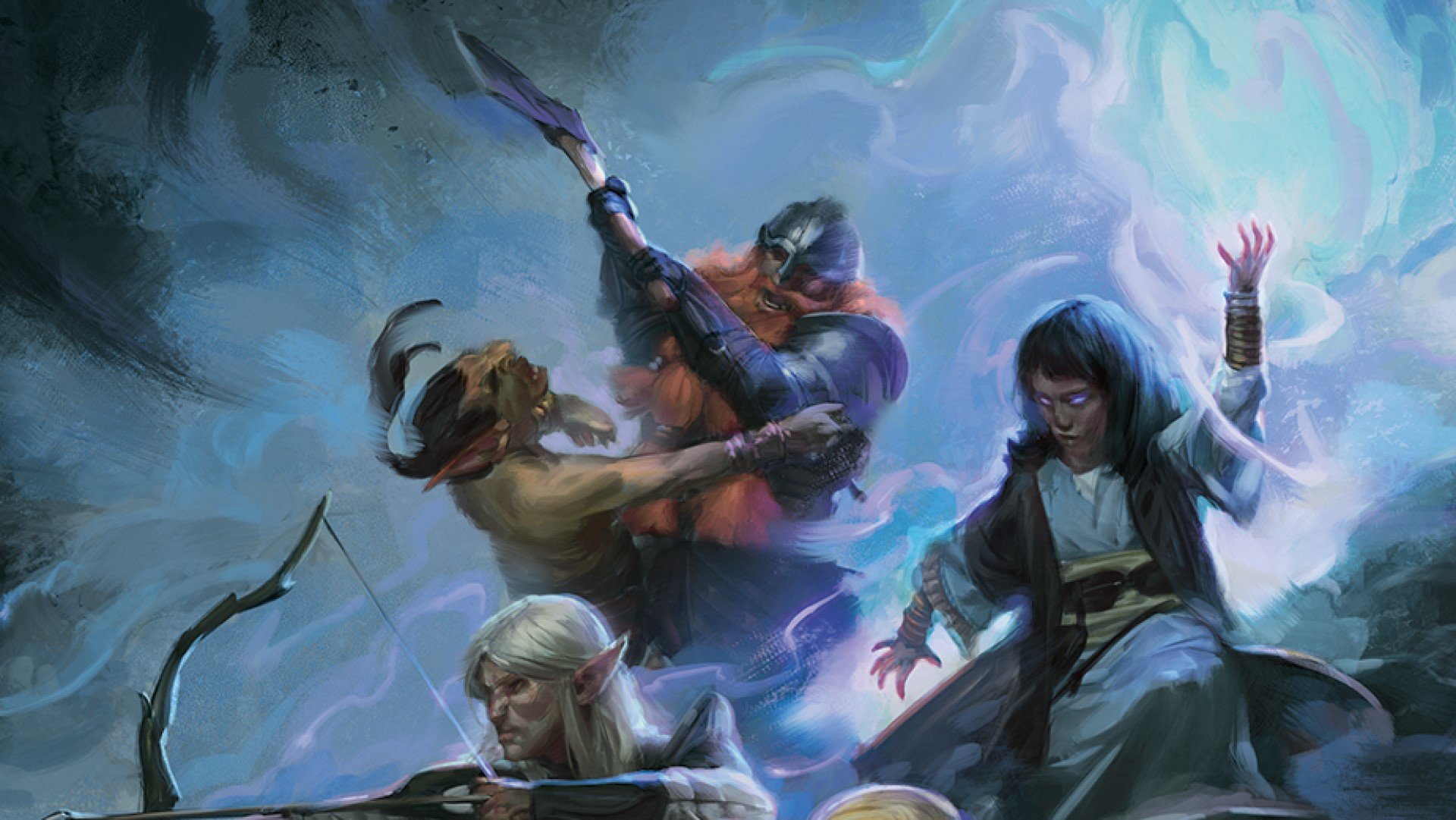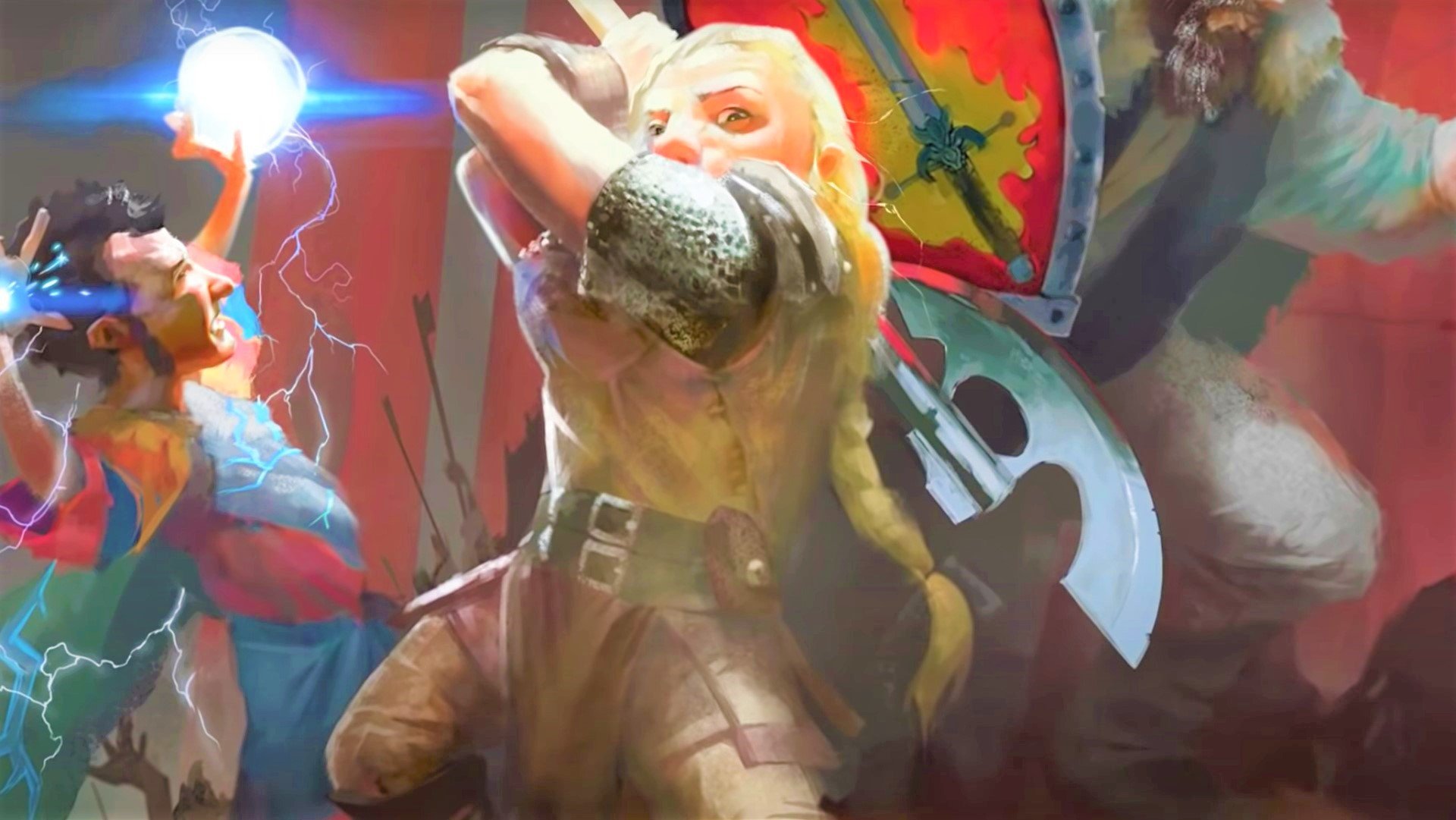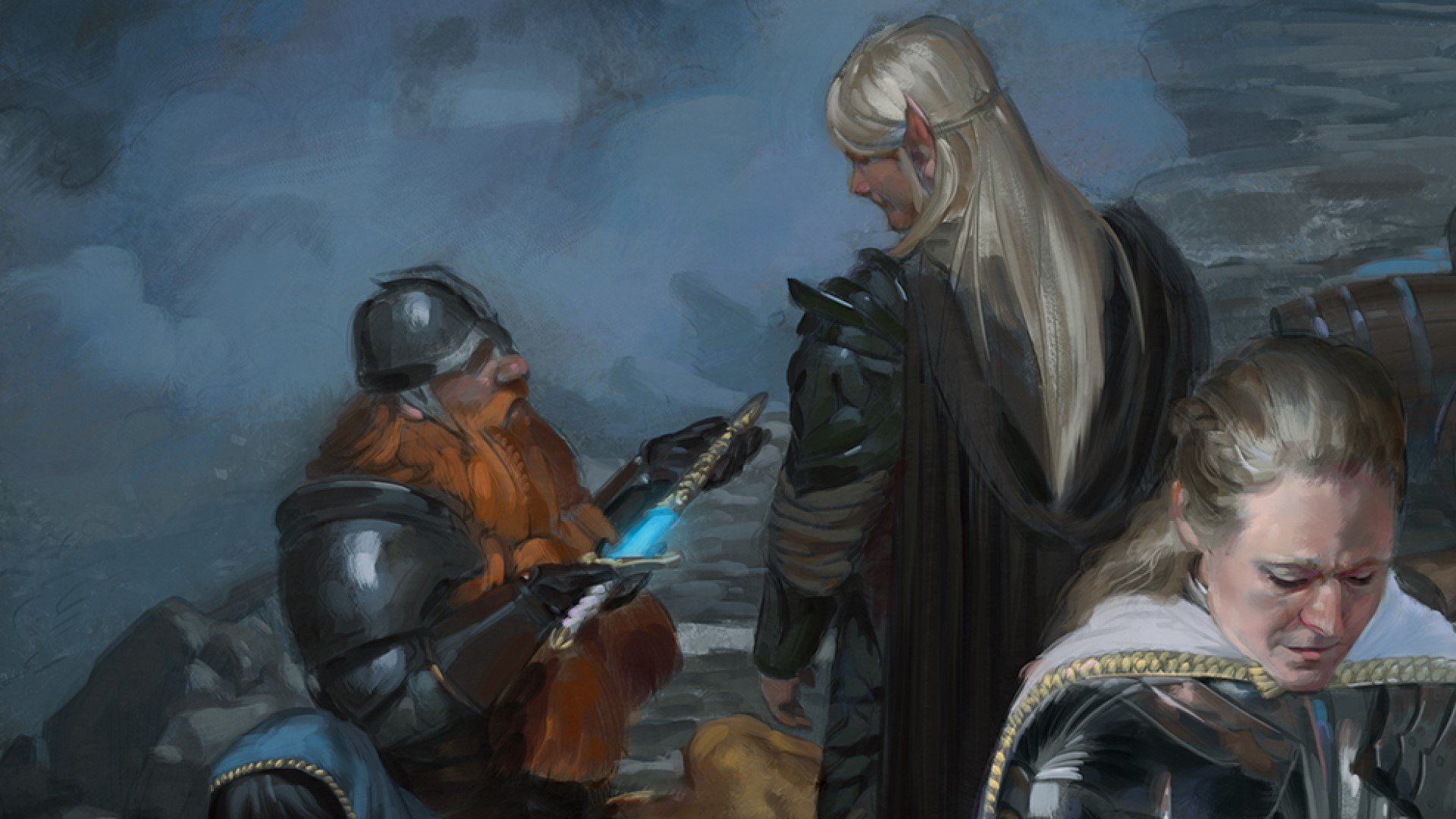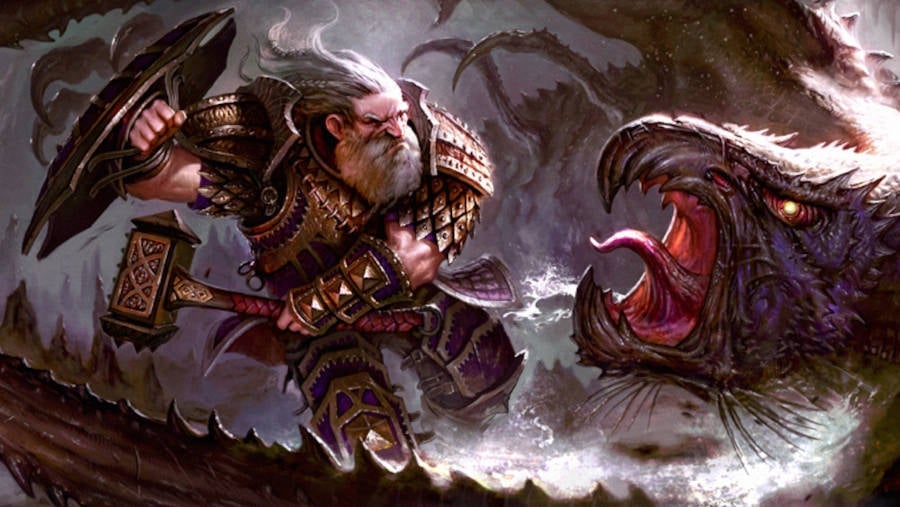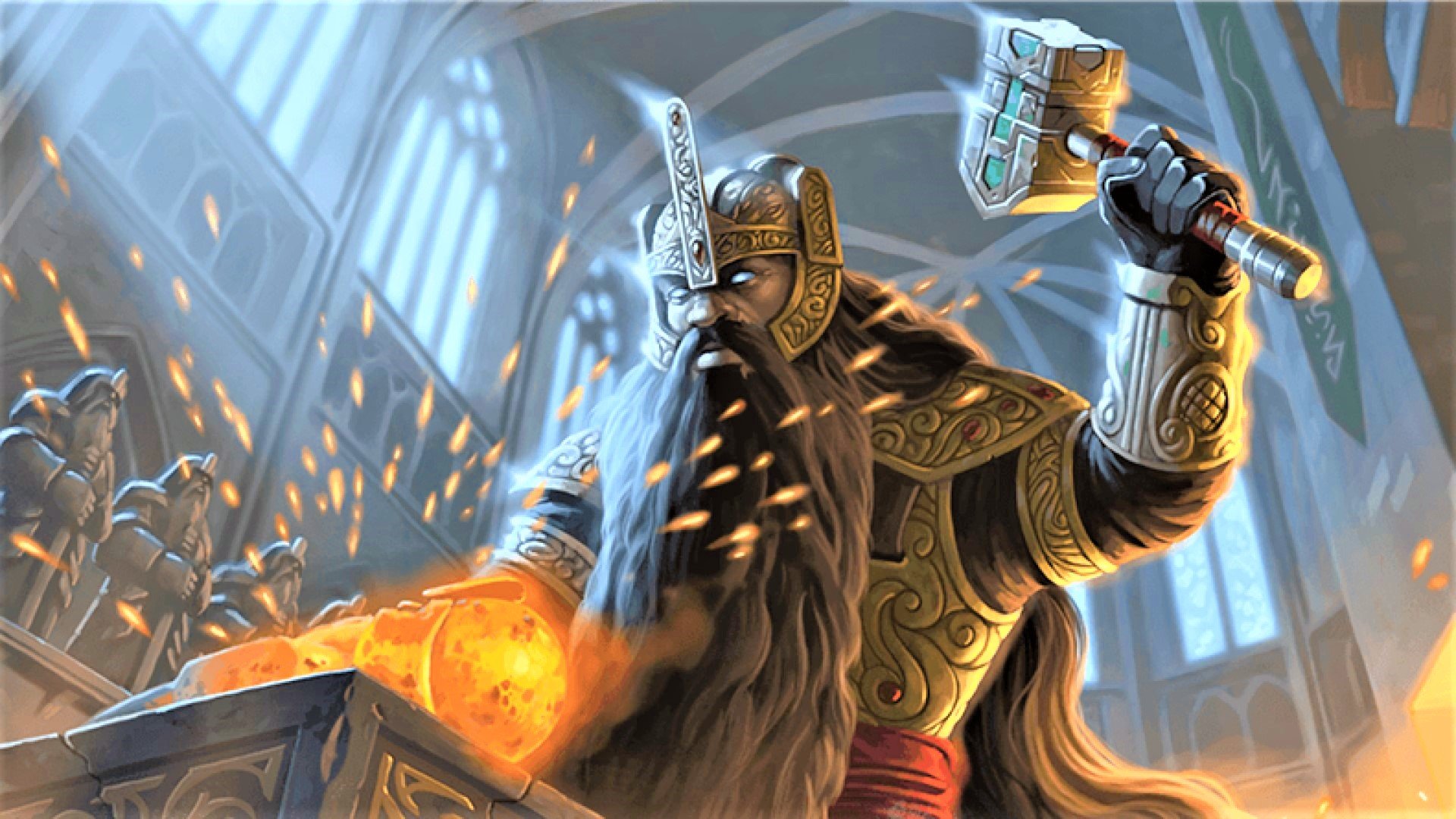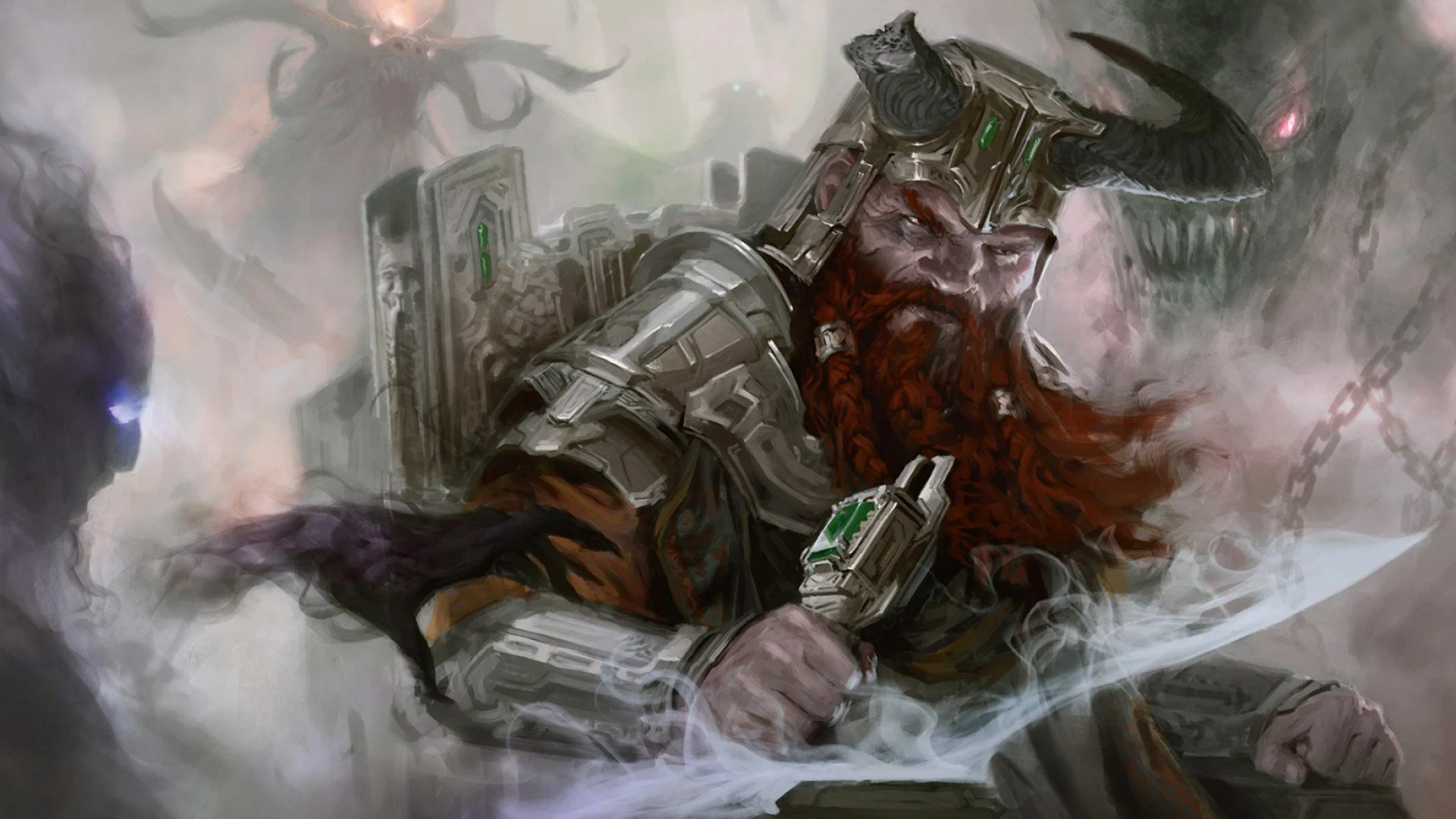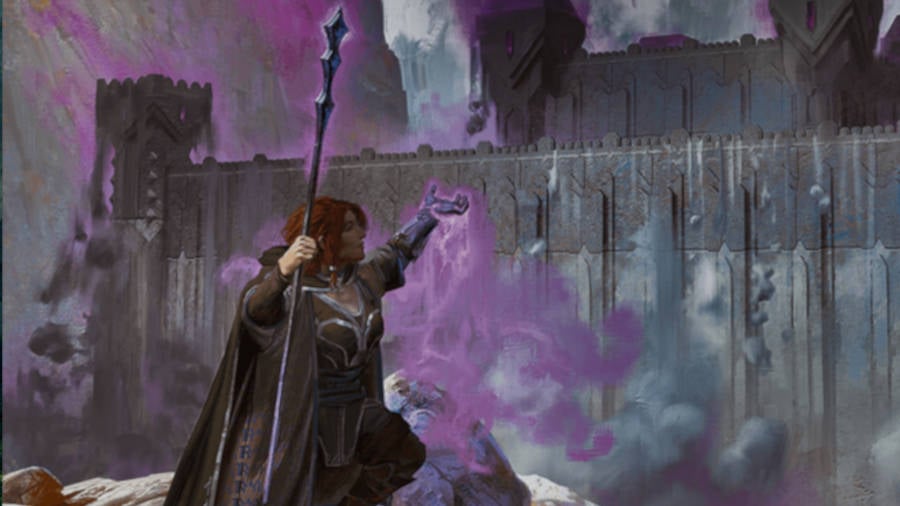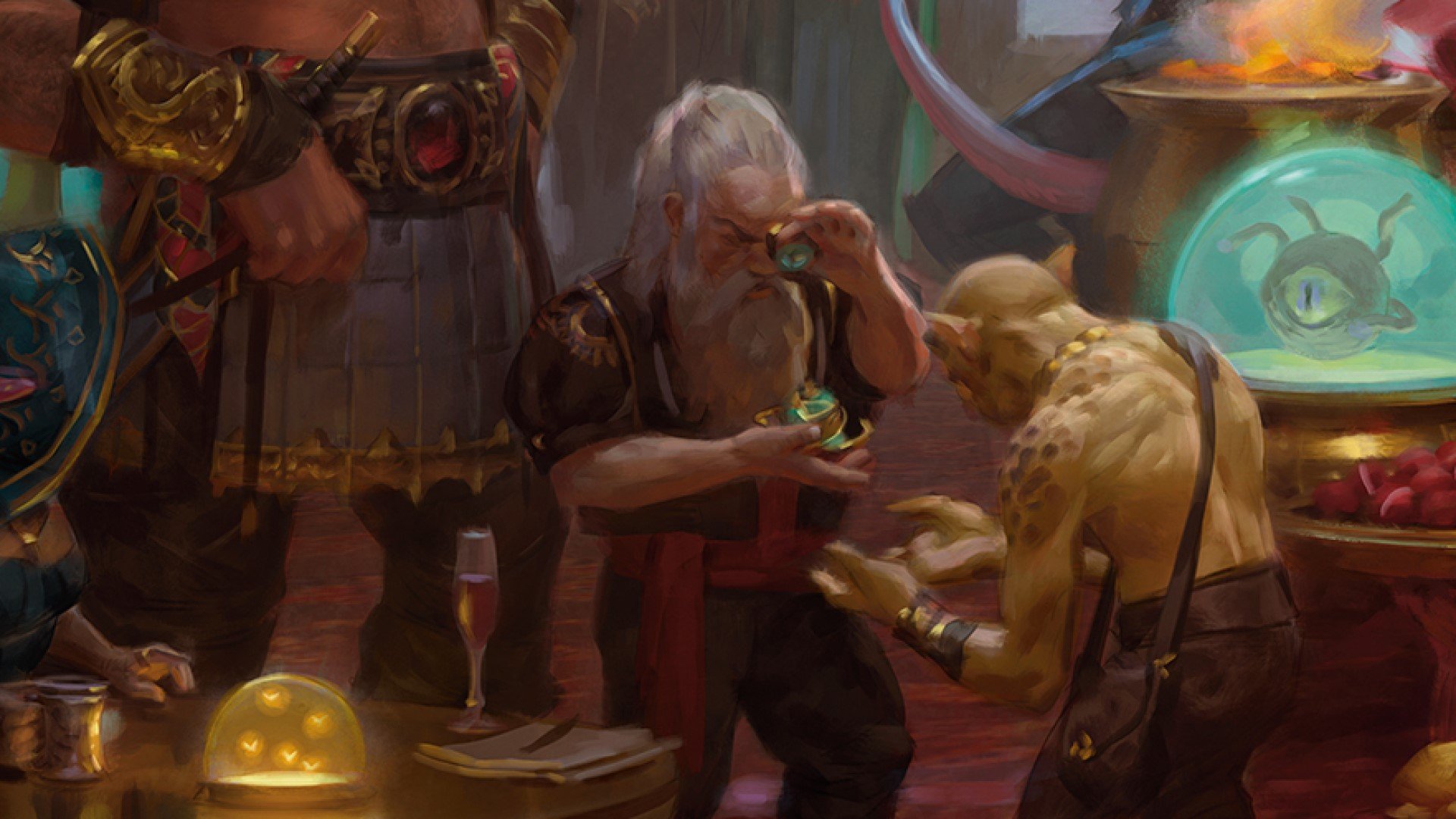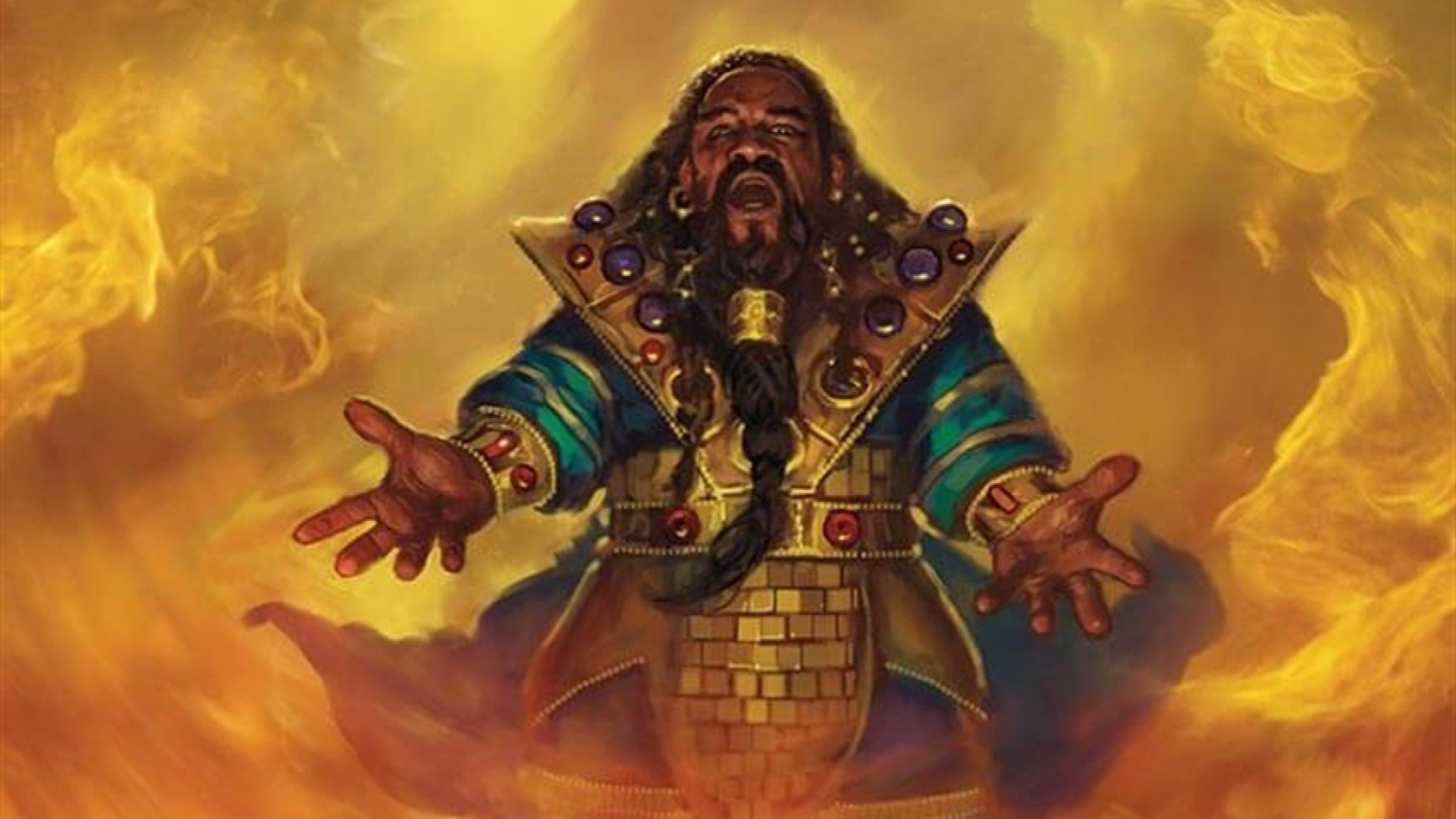The DnD dwarf embodies every trope and tradition ever seen in the fantasy genre. They’re stout, bearded, hammer-wielding creatures who value the heritage of their clans as much as gold and fine jewels. Known for their masterful metalwork and mining, the dwarves of D&D are most at home in the mountains.
Despite the familiar write-up, the dwarf 5e race still has surprises up its sleeves. With the right combination of subraces and DnD classes, players can create unique dwarf DnD character builds that bring utility and variety to their roleplaying. The dwarf is one of the most enduring DnD races for a reason – and this guide is here to show you why.
Here’s everything you need to know about the DnD Dwarf 5e race:
Dwarf 5e names
According to the Player’s Handbook, Dwarf 5e names are steeped in tradition. Dwarves have a given name and a clan name. The first name is chosen by a clan elder, and the title is likely shared by many others in that group’s history. Dwarves see names as a communal thing – so any pride or shame you bring these names will be shared amongst your kin.
Here are some examples of dwarven clan names:
- Battlehammer
- Daerdahk
- Fireforge
- Foamtankard
- Stormkind
- Tonhor
And here are some dwarf first names:
- Alberich
- Belnar
- Eldeth
- Gilrigg
- Kilia
- Rangrim
Dwarf 5e traits
Here are the main stats for dwarves in D&D:
| Ability score increase | +2 Constitution |
| Size | Medium |
| Speed | 25ft |
| Traits | Darkvision, Dwarven Resilience, Dwarven Combat Training, Stonecutting |
| Languages | Common, Dwarvish |
| Tool proficiencies | Smith’s, brewer’s, or mason’s |
While these are the dwarf 5e traits as presented in the core DnD books, bear in mind that Tasha’s Cauldron of Everything allows you to further customise your origin. If you want to play a dwarf that speaks different languages or has different proficiencies or DnD stats, this is the way to do it. Either that, or you can bring in a bit of DnD homebrew.
With that out of the way, let’s define exactly what these dwarven traits do. Darkvision lets dwarves see in dim light for 60ft, and they can see in darkness as if it were dim light. Dwarves are slower than most humanoid creatures, but their speed also isn’t hampered by wearing heavy armour – it pays to be sturdy.
Dwarven Resilience means your character has advantage on saving throws against poison, as well as resistance against poison damage. Dwarven Combat Training gives you proficiencies with various DnD weapons 5e. This trait makes the battleaxe, handaxe, light hammer, and warhammer ideal picks.
Finally, Stonecutting means you’re proficient in History any time you’re checking the origin of stonework. You can even add double your proficiency bonus rather than your normal proficiency bonus to the check.
Dwarf 5e subraces
Not every dwarf is a mountain-dwelling, hammer-swinging warrior. The Forgotten Realms (or any other DnD settings you may be playing in) is a big place, and dwarves living in vastly different climes and cultures are going to have very different features. Dwarf 5e subraces represent a few of the different ways you might play your character – and provide some extra unique abilities to boot.
Here’s the official list of D&D dwarf subraces:
Hill dwarf
Ability score increase: +1 Wisdom
As the name implies, you’ll find the hill dwarf living on mounds of high ground. These are one of the ‘standard’ dwarves you can expect to see in Faerûn, DnD’s main setting. Many dwarves from other DnD planes and planets also bear resemblance to this subrace – some of the Dragonlance dwarves are hill dwarves, for example.
Because this is a bog-standard DnD dwarf, you don’t get many extra abilities with this subrace. Dwarven Toughness increases your hit point maximum by one every time you gain a DnD level up (including level one), but that’s your lot.
Mountain dwarf
Ability score increase: +2 Strength
Another common kind of dwarf is the mountain dwarf. Found in Krynn and Faerûn alike, these dwarves are a little bigger and sturdier than their distant relatives thanks to life on a cold, craggy peak.
Again, there aren’t many extra abilities to gain from this subrace. Dwarven Armour Training gives mountain dwarves proficiency with light and medium armour as well as the standard heavy armour. Despite its lack of variety, that extra durability has plenty of in-game benefits depending on what class you play.
Gray dwarf
Ability score increase +1 Strength
Also known as the Duergar, the gray dwarves live in the Underdark. They were once ruled by the tyrannical Mind Flayers – and though they’re now free from their former rulers, the Player’s Handbook says the Duergar now take slaves and exact a tyranny of their own. They see themselves as superior to all other dwarves – a mindset that’s more akin to DnD monsters like the Beholder 5e than any of the typical playable races.
If the grim backstory wasn’t a clue, the gray dwarf is a bleak choice of subrace. Gray dwarves aren’t known to show happiness or enjoy artistic beauty. It’s also suggested that the only Duergar to become adventurers do so because they’re exiles – so heroism (and smiling) is back on the table if you feel like playing one.
Growing up so deep underground does have some perks, mind you. Gray dwarves have superior darkvision with a radius of 120ft, and they can speak Undercommon. Duergar Resilience also gives them advantage on saving throws against illusions, being charmed, or becoming paralysed.
Thanks to Duergar Magic, gray dwarves can also cast the Enlarge/Reduce spell without material components once they reach level three. However, they can only choose ‘enlarge’, and the spell can’t be cast in direct sunlight. Gray dwarves can also cast Invisibility 5e from level five in the same way (no components, avoid sunlight). Both 5e spells refresh after a long rest, and Intelligence is their spellcasting ability.
Underdark living comes with drawbacks too. The main one is Sunlight Sensitivity – gray dwarves have disadvantage on attack rolls and Perception checks that use sight if they or the thing they’re trying to see is in direct sunlight.
Mark of Warding dwarf
Ability score increase: +1 Intelligence
The Mark of Warding dwarf isn’t a typical subrace found in the Player’s Handbook; you’ll have to pick up a copy of Eberron: Rising From the Last War. These dwarves make their fortune anywhere a good lock is needed – whether it’s home security or banking, the dwarves can use their Mark of Warding to provide magical protection.
Warder’s Intuition adds a d4 anytime your dwarf rolls an Investigation check or uses thieves’ tools. The subrace also has a trait called Wards and Seals which allows it to cast Alarm and Mage Armour once per long rest. From level three, they can also cast Arcane Lock in the same way. None of these spells need components, and they use Intelligence as their spellcasting ability.
That’s not all for spellcasting, either. If your dwarf has the Spellcasting or Pact Magic feature, they get access to the following spell list:
- Alarm (level one)
- Armour of Agathys (level one)
- Arcane Lock (level two)
- Knock (level two)
- Glyph of Warding (level three)
- Magic Circle (level three)
- Leomund’s Secret Chest (level four)
- Mordenkainen’s Faithful Hound (level four)
- Antilife Shell (level five)
Dwarf 5e classes
Thanks to the wide range of skills offered by its different subclasses, the dwarf is a race that succeeds in many classes.
High Constitution and HP mean they can easily soak up damage, so you can easily craft a tough-as-nails Barbarian 5e, Fighter 5e, or Paladin 5e and leap straight into melee. The additional strength of the mountain dwarf or gray dwarf makes these an obvious choice of subrace here.
If you’re more interested in spellcasting, the hill dwarf makes an excellent Cleric 5e or Druid 5e. The Mark of Warding dwarf also boosts the Artificer 5e class and the Wizard 5e class, making these equally beefy choices.
Should you set your heart on one of the few classes not mentioned here, there’s nothing stopping you from using Tasha’s custom origins. Then you can craft a dwarf build to suit basically any scenario – whether that’s a beefy Bard 5e or a brooding Blood Hunter 5e.
Source: Wargamer



